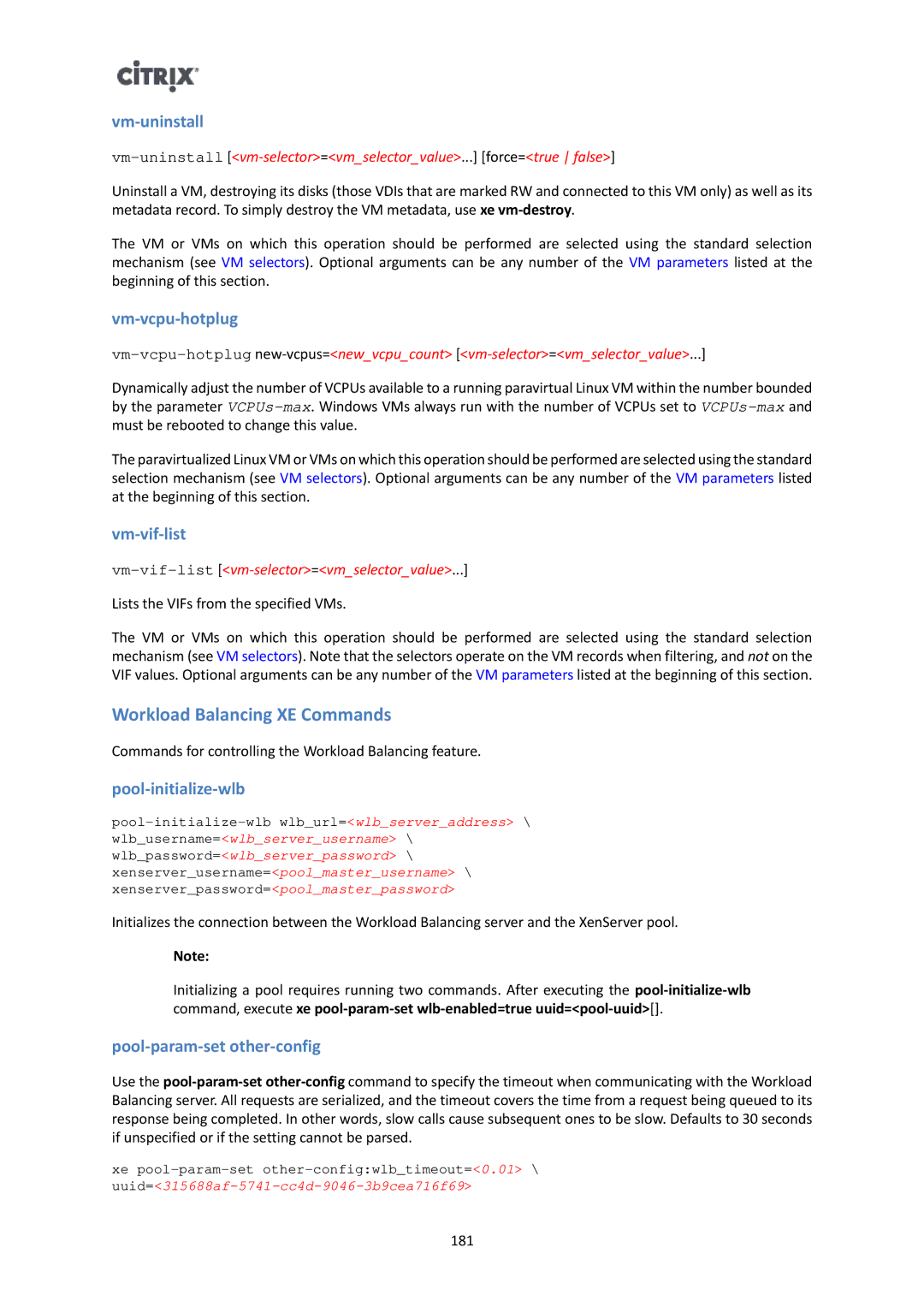vm-uninstall
vm-uninstall [<vm-selector>=<vm_selector_value>...] [force=<true false>]
Uninstall a VM, destroying its disks (those VDIs that are marked RW and connected to this VM only) as well as its metadata record. To simply destroy the VM metadata, use xe
The VM or VMs on which this operation should be performed are selected using the standard selection mechanism (see VM selectors). Optional arguments can be any number of the VM parameters listed at the beginning of this section.
vm-vcpu-hotplug
Dynamically adjust the number of VCPUs available to a running paravirtual Linux VM within the number bounded by the parameter
The paravirtualized Linux VM or VMs on which this operation should be performed are selected using the standard selection mechanism (see VM selectors). Optional arguments can be any number of the VM parameters listed at the beginning of this section.
vm-vif-list
vm-vif-list [<vm-selector>=<vm_selector_value>...]
Lists the VIFs from the specified VMs.
The VM or VMs on which this operation should be performed are selected using the standard selection mechanism (see VM selectors). Note that the selectors operate on the VM records when filtering, and not on the VIF values. Optional arguments can be any number of the VM parameters listed at the beginning of this section.
Workload Balancing XE Commands
Commands for controlling the Workload Balancing feature.
pool-initialize-wlb
wlb_username=<wlb_server_username> \ wlb_password=<wlb_server_password> \
xenserver_username=<pool_master_username> \ xenserver_password=<pool_master_password>
Initializes the connection between the Workload Balancing server and the XenServer pool.
Note:
Initializing a pool requires running two commands. After executing the
pool-param-set other-config
Use the
xe
181
